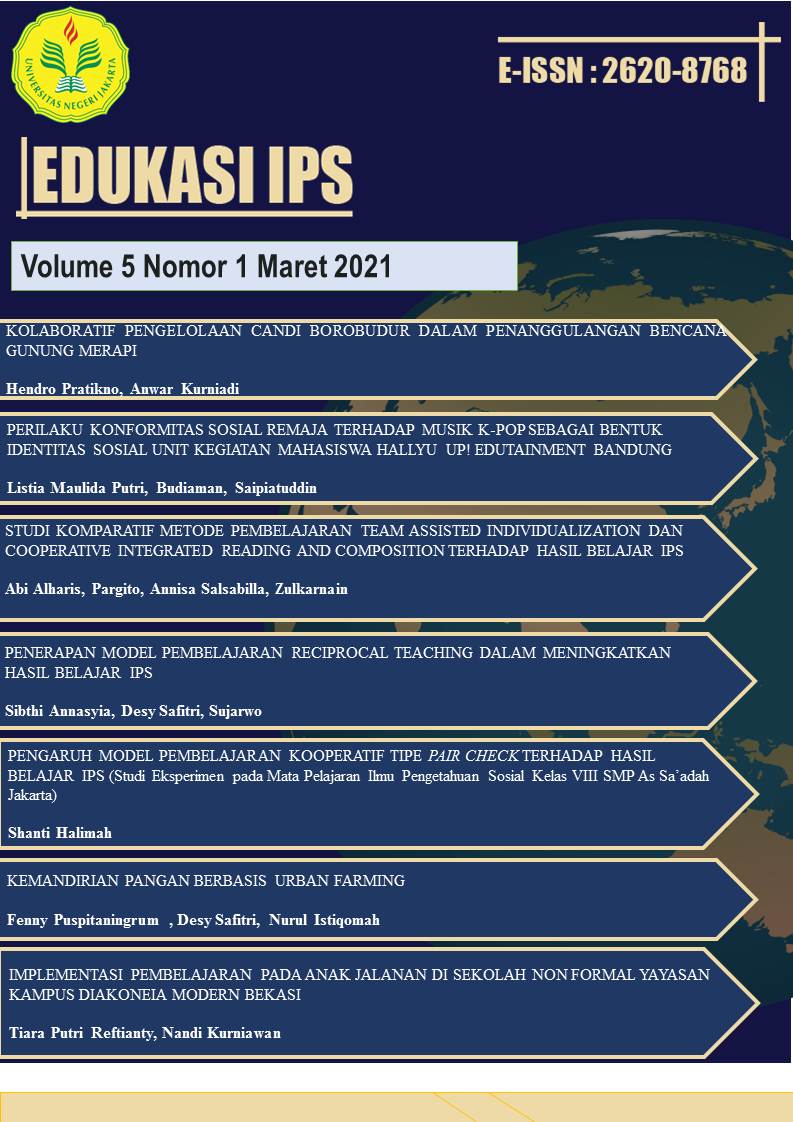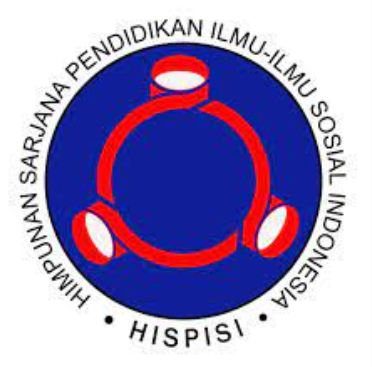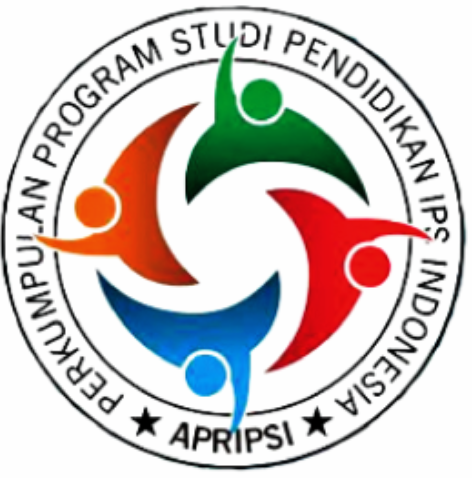Studi Komparatif Metode Pembelajaran Team Assisted Individualization dan Cooperative Integrated Reading and Composition terhadap Hasil Belajar IPS
DOI:
https://doi.org/10.21009/EIPS.005.1.03Keywords:
CIRC learning method, Learning outcome, TAI learning methodAbstract
This research aims to compare the differences in students learning outcomes in IPS subjects in grade VIII of SMP Negeri Tumijajar using cooperative learning models such as Team Assisted Individualization (TAI) and Cooperative Integrated Reading and Composition (CIRC). This study use pseudo-experimental research with Nonequivalent Control Group Design. Population in this study is all grade VIII students and samples are 58 students divided into 29 students in class VIII C and 29 students in class VIII D. Collecting data technique using observation, pre and post test, and documentation literature while for the analyzing data using t-test. The results showed that there were a significant differences in learning outcomes for student who learned cooperative TAI type compared to CIRC type with t-test results obtained 2,486 > 2,003 with a significant rate of 0.009 < 0.05
Downloads
Published
How to Cite
Issue
Section
License
Authors who publish with this journal agree to the following terms:
- Authors retain copyright and grant the journal right of first publication with the work simultaneously licensed under a Creative Commons Attribution ShareAlike License that allows others to share the work with an acknowledgement of the work's authorship and initial publication in this journal.
- Authors are able to enter into separate, additional contractual arrangements for the non-exclusive distribution of the journal's published version of the work (e.g., post it to an institutional repository or publish it in a book), with an acknowledgement of its initial publication in this journal.
- Authors are permitted and encouraged to post their work online (e.g., in institutional repositories, pre-prints sites or on their website) prior to and during the submission process, as it can lead to productive exchanges, as well as earlier and greater dissemination of published work







